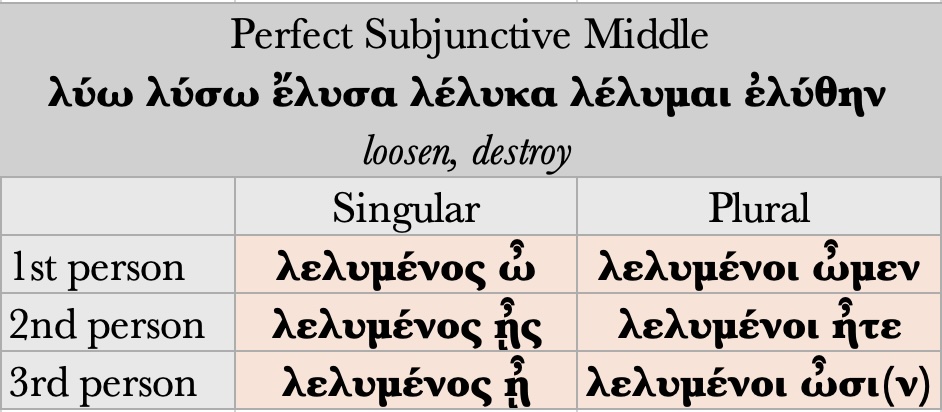46.28 As noted above, the subjunctive can also be formed in the PERFECT tense to express COMPLETED aspect. Though the perfect subjunctive is rarely encountered in Greek (S 691-693), its active form is relatively straightforward to identify. As with the PRESENT and AORIST, subjunctive personal endings are simply added to the TENSE STEM, in this case, the PERFECT TENSE STEM.
Let’s look, for example, at this verb: λύω, λύσω, ἔλυσα, λέλυκα, λέλυμαι, ἐλύθην
- perfect active tense stem: λελυκ–
46.30 That said, many forms of the PERFECT SUBJUNCTIVE proved difficult to pronounce. As a result, sometimes in the ACTIVE voice, and always in the MIDDLE voice, Greek used the following PERIPHRASTIC forms (S 599, 691, G 252-253):
- perfect active:
- PERFECT ACTIVE PARTICIPLE followed by the SUBJUNCTIVE form of εἰμί
- e.g. λελύκῃ or λελυκὼς ᾖ
- perfect middle:
- PERFECT MIDDLE PARTICIPLE followed by the SUBJUNCTIVE form of εἰμί
- e.g. λελυμένος ᾖ (never λελυ– + –ηται)
Charts JPG




